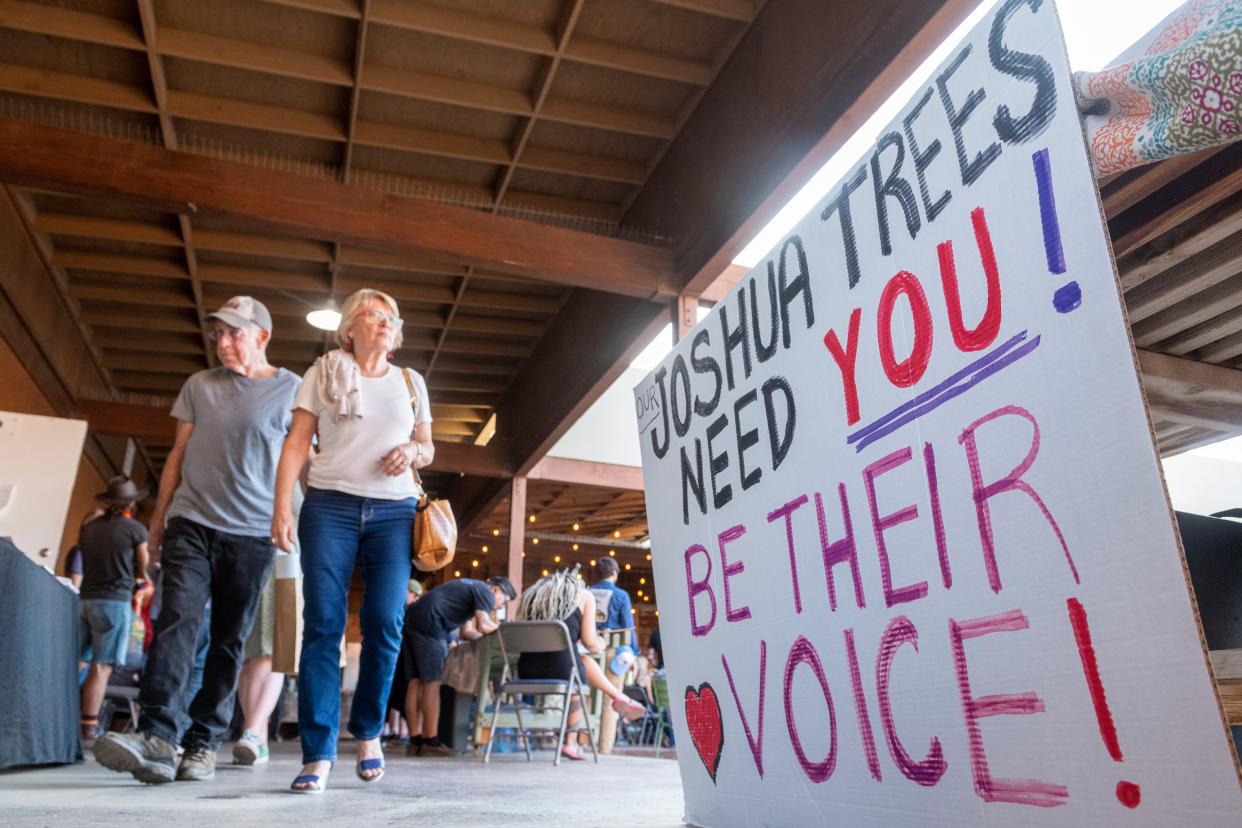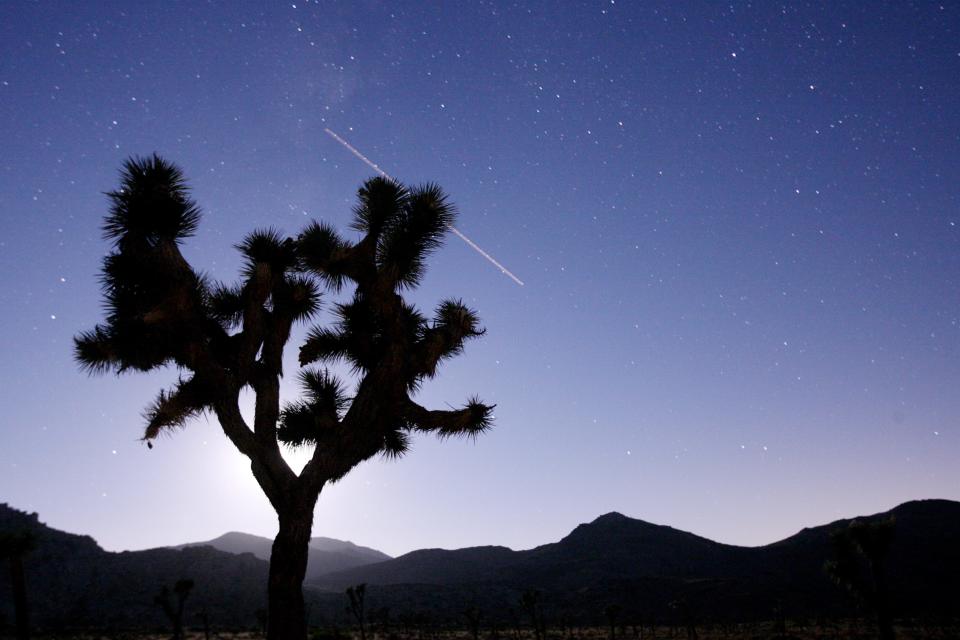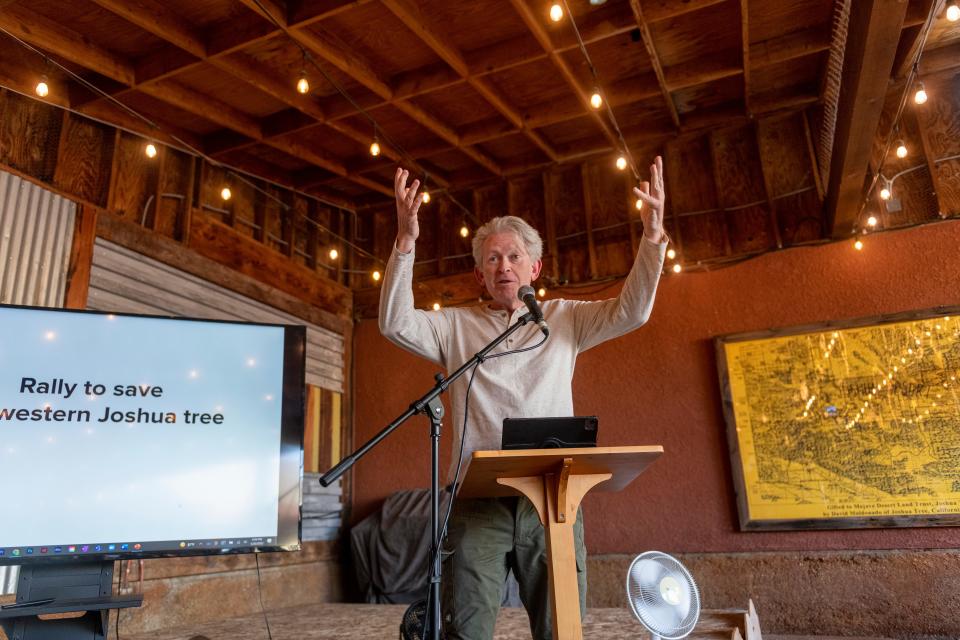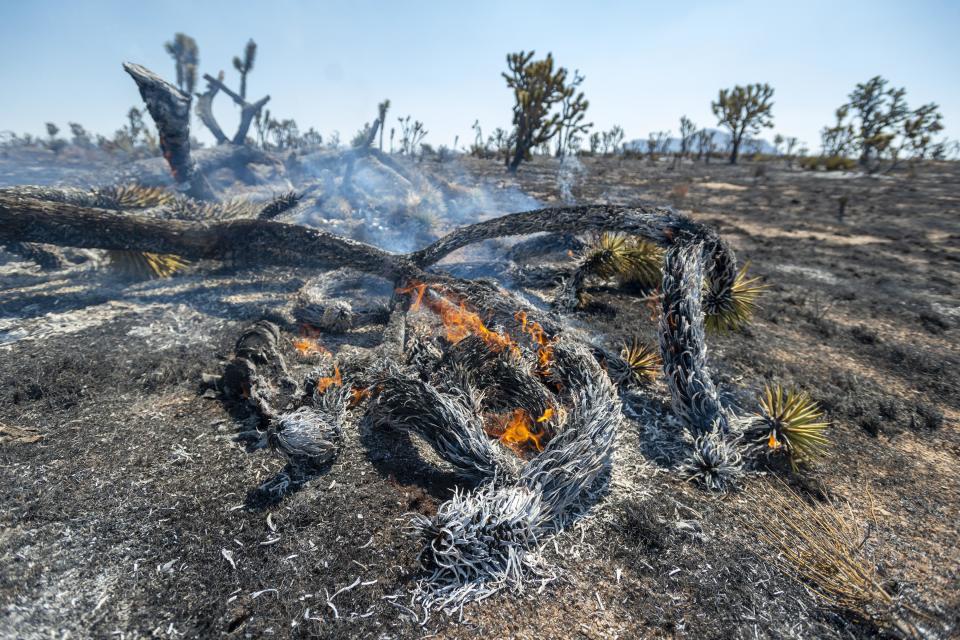Advocates urge California to put western Joshua Tree on endangered list

A group of more than 100 people gathered for a rally at the Mojave Desert Land Trust headquarters to garner support for placing the western Joshua tree on the state’s list of endangered and threatened species.
Speakers at Thursday’s event in Joshua Tree discussed the threats to the iconic plant and the importance of the tree to other desert species, which include humans.
“It’s helping to create oxygen, it’s helping to nourish pollinators, it’s helping to sequester carbon to help mitigate our climate change,” said MDLT’s joint executive director Kelly Herbinson. “Just by being it's protecting us as a species.”
The California Fish and Game Commission is set make the final decision on June 15 and 16 whether to list the western Joshua tree as a threatened species under the California Endangered Species Act.
The listing would give the tree — which is actually a succulent and part of the Yucca genus — protections it’s had since being granted candidate status in September 2020.
Those protections include a ban on importing, exporting, taking or killing, purchasing and selling the plant except when authorized.
The western Joshua tree was given candidate status while the California Department of Fish and Wildlife conducted a review to determine whether it should be considered threatened.
Last month, the department issued a report to the commission which recommended not listing the tree under the endangered species act.

Although the department acknowledged many factors threaten the western Joshua tree, particularly warmer temperatures reducing its habitat, state officials said the tree “is currently abundant and widespread, which lessens the overall relative impact of the threats to the species, and substantially lowers the threat of extinction within the foreseeable future.
“Furthermore, the Department does not have the data to determine the extent to which climate changes that are expected to occur in the foreseeable future are likely to affect western Joshua tree range within California within this timeframe,” according to the report.
Desert cities and trade groups, such as the High Desert Association of Realtors, have opposed the listing and argue that existing regulations do enough to protect the species.
About 40% of the western Joshua tree’s range is on private land. If the plant were granted protected status, development would become more difficult.
Brendan Cummings, an attorney and conservation director for the Center for Biological Diversity, authored the 2019 petition to request that the tree be considered threatened.
He described the report in a statement in April as “scientifically and legally flawed” and expressed similar beliefs at Thursday’s rally. Cummings and Cameron Barrows, a retired conservation biologist, said four out of five scientists and independent experts who peer reviewed the report — including Barrows — disagreed with the department's recommendation.

Western Joshua trees face a tough road in reaching reproductive maturity which may take 30 to 50 years. They only flower in certain years and are only pollinated by a certain species of moth.
Seeds must be dispersed by rodents and buried without being eaten first. The seeds then only germinate under optimal conditions.
Cummings cited one study that found fewer than 1% of seeds produce seedlings.
“Even without climate change, Joshua trees have a really hard time of reproducing,” he said.
With rising temperatures of 3 degrees Celsius, the suitable habitat for Joshua tree would be reduced by 90%, according to a study partly conducted by Barrows who also spoke at the rally.
Another study in 2019 found that if major changes were made to reduce greenhouse gases, the efforts would only save 19% of western Joshua tree habitat at Joshua Tree National Park by the end of the century.
With no reduction in emissions, the park would be pretty much left without its namesake plant with 0.02% of suitable habitat.
Wildfire is also a threat as climate change has led to invasive grasses sprouting in the desert. More fuel means more destructive blazes as was seen in August 2020 when the Dome Fire in Mojave National Preserve burned more than 44,000 acres in one of the densest and largest Joshua tree forests in the world.

Cummings quoted a statement from the Fish and Wildlife report that said the department “expects that any changes in the range of western Joshua tree that are ultimately caused by climate change will likely occur very slowly, perhaps over thousands of years” based on fossil records following climate changes.
A United Nations’ Intergovernmental Panel on Climate Change report has found that Earth is warming more rapidly than previously thought and that global temperature is expected to reach or exceed 1.5 degrees Celsius over the next 20 years.
“We don’t have a thousand years to protect Joshua trees,” Cummings said. “The time to act is now.”
According to biologist Barrows, western Joshua trees are a keystone species which have a large effect on their habitat and are considered essential to an ecosystem.
At least two insect species would go extinct without their presence, and four species of reptiles and eight or nine types of birds would be affected if the tree were gone.
“What we’re talking about is the world becoming much, much less diverse, less species richness,” he said.
Daily Press reporter Martin Estacio may be reached at 760-955-5358 or MEstacio@VVDailyPress.com. Follow him on Twitter @DP_mestacio.
This article originally appeared on Victorville Daily Press: Advocates urge California to put western Joshua Tree on endangered list

